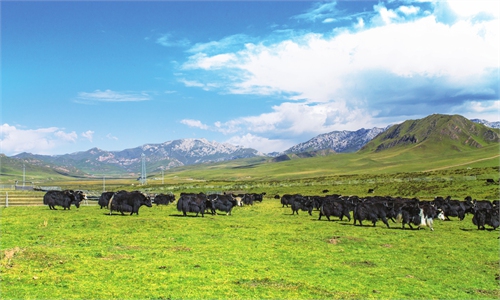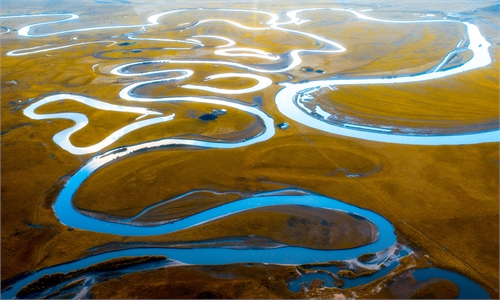IN-DEPTH / IN-DEPTH
Establishment of dams a scientific flood and drought relief tool for inhabitants along Yellow River, and symbol of hopeful Chinese future
Unremitting progress
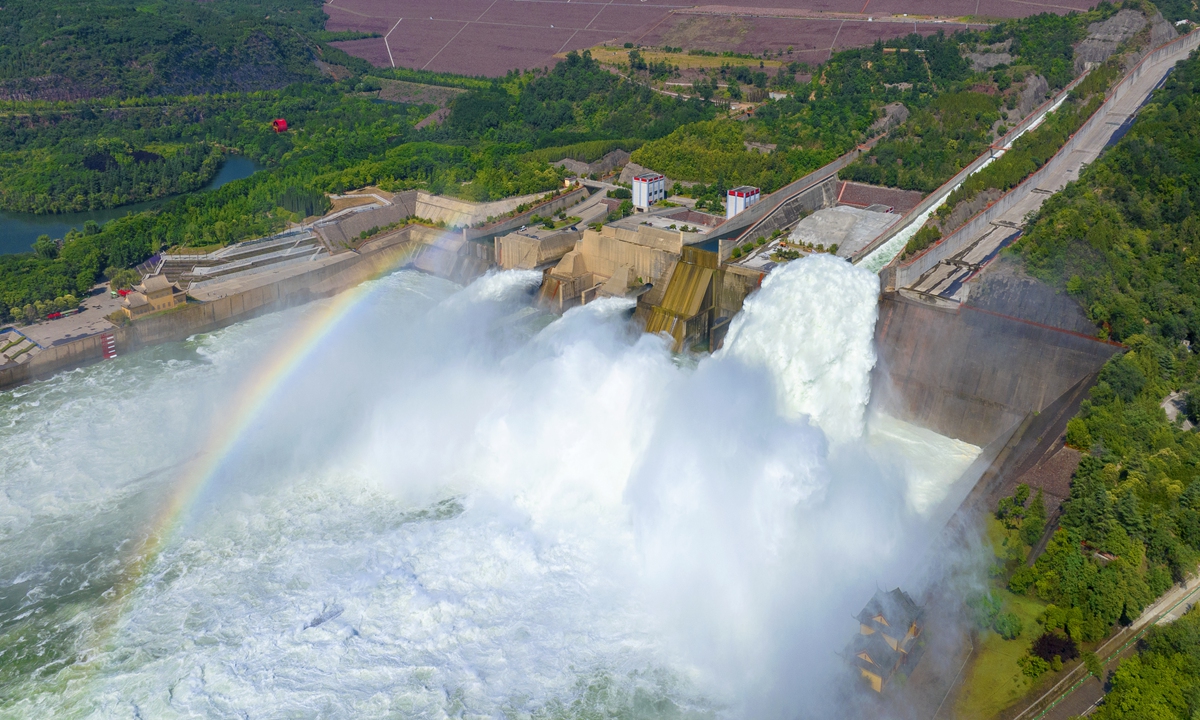
The Xiaolangdi Dam enters the water transfer stage on June 23, 2022, as the Yellow River's water flows out from the spillway tunnels. Photo: VCG
Editor's Note:
The Yellow River is regarded as the "Mother River" of the Chinese nation. For thousands of years, its basin has been a political, economic and cultural center in the long history of the Chinese civilization. Today, the 5,464-kilometer-long waterway feeds 12 percent of China's population, irrigates 17 percent of all arable land, and supplies water to more than 50 large and medium-sized cities.
Because of its incomparable historical, cultural and economic significance, together with its impact on the environment, great efforts must be brought to bear in the protection of the river and its basin. The Global Times will publish a series of stories to show the progress of development along the Mother River, and the people's love for and happiness tied to the ancient waterway.
In this second installment, we focus on the flagship water conservancy facilities used for the improvement of the ability to prevent and cope with natural disasters along and across the Yellow River.
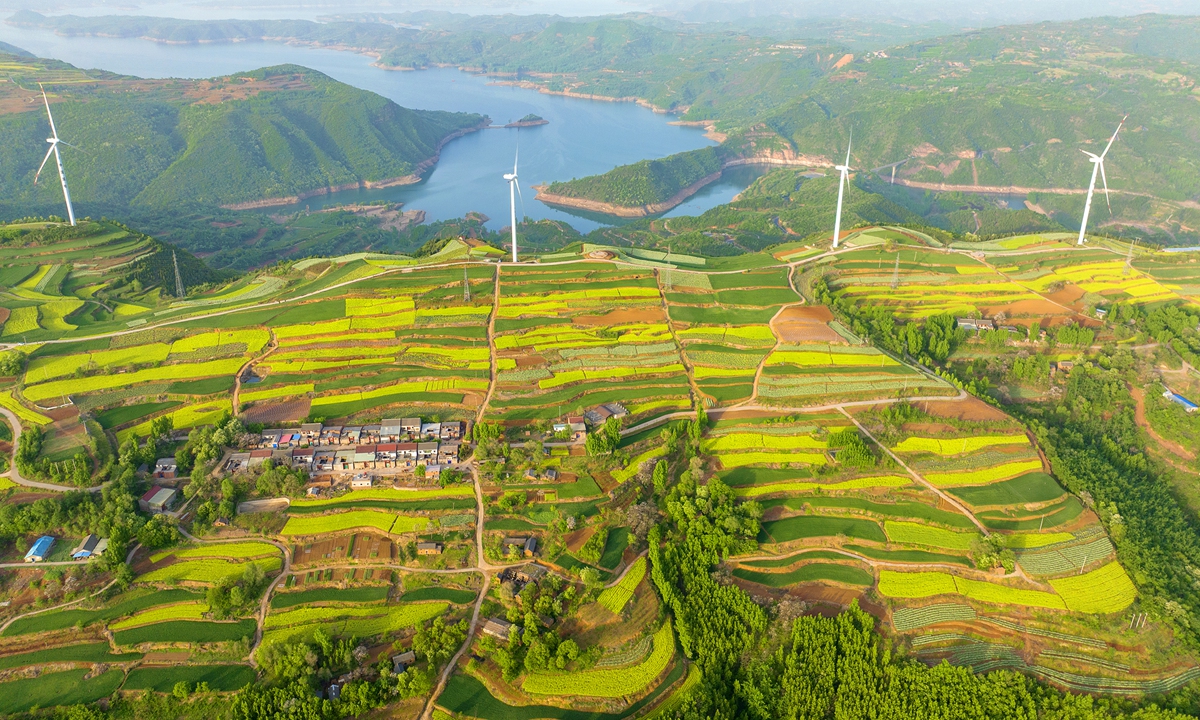
A view of golden cauliflower and green wheat seedlings seen in Fandouling village, Henan Province, on the north bank of the Xiaolangdi Dam on April 23, 2022. Photo: IC
China has an old saying that "the society will flourish if the waters of the Yellow River are peaceful."As the second-longest river in China, the Yellow River is expected to play a more important role in the country's development, with more efforts in disaster relief, environmental protection and high-quality development in the river basin.
As an "ecological corridor," the Yellow River, linking the Qinghai-Tibet Plateau, the Loess Plateau, and plains in northern China, which suffer from severe water scarcity, plays a key role in preventing desertification and ensuring water supply with the support of water conservancy projects.
Dams were built to generate power and control flood and silt, while large afforestation projects were also carried out to reduce soil erosion on the Loess Plateau.
Xiaolangdi Dam, a water control project on the main tributary of the Yellow River, is a key control project meant to beef up the peaceful flow of the Yellow River. The dam is located in Luoyang, Central China's Henan Province.
As the largest of its kind on the Yellow River, the Xiaolangdi Dam, designed to control flood and ice, to dredge, and to ensure water supply and power generation, directly affects the downstream flow of the Yellow River thanks to its reservoir capacity, influencing flood control, drought relief, and ecology systems which impact the lives of millions of people.
Resettled residents affected by the construction and operation of the Xiaolangdi Dam told the Global Times that they thanked local governments for restoring and improving their livelihoods while minimizing the adverse effects of their social readjustment to their new environment.
Over the last 70 years, China carried out four large-scale embankment construction projects along the Yellow River and built water conservancy projects such as the Longyang Gorge and Liujia Gorge hydropower projects, and the Xiaolangdi Dam as of June 2020, marking a major shift from passive treatment to active management of sand and water in the Yellow River, the Xinhua News Agency reported.
The awareness of the protection of the Yellow River via infrastructure building has also legally been strengthened. Chinese lawmakers voted on Sunday to adopt a new law, which will take effect on April 1, 2023, on the conservation of the Yellow River, as the country ramps up efforts to protect the important river, Xinhua reported.
Targeting key problems including water shortages, ecological fragility, and flooding along the Yellow River, the law reiterated that China encourages the development of new types of infrastructure in the Yellow River basin to bolster water conservancy and disaster prevention and mitigation.
Comprehensive water hub
Each year, hundreds of thousands of tourists flock to the Xiaolangdi Dam to admire the view of a ritual, billowy waterfall which gives the impression of an eruption from deep within the Earth. Behind the spectacle, Xiaolangdi Dam has long been a monument and witness to the history of China's management of the Yellow River.
The dam controls 92 percent of the Yellow River's flow, making itself one of the most iconic masterpieces of hydro engineering in the world.
As the Yellow River carries some of the most concentrated sedimentation compared with other rivers around the world, its riverbeds are easily raised, creating a phenomenon referred to as the "hanging river," increasing the risk of serious flooding and potential bursting of the river's banks during flood season.
Before the Xiaolangdi Dam was built, the downstream river channel would allow the flow of as little as 1,800 cubic meters of water per second, and inhabitants of floodplain would routinely have to move away when the water flow would go over this mark.
However, by 2021, the water volume had increased to 5,000 cubic meters per second after over 20 rounds of improvements were implemented, with the support of the Xiaolangdi Dam, which dramatically raised the flood discharge capacity downstream and efficiently ensured the protection of local residents' lives and property, the Global Times learned from the team managing the project.
The Xiaolangdi Dam has also greatly eased the occurrence of droughts downstream.
Before the Xiaolangdi project was completed in 2001, the main tributary of the lower Yellow River section would periodically be cut off by droughts for at least 22 years between 1972 and 1999, with the cut-off section reaching lengths of up to 700 kilometers.
Such occurrences are a thing of the past since the completion of the Xiaolangdi Dam, according to the management team.
"We regulate the flow through capturing and storing the water over the flood season and release water moderately over the drought season depending on the downstream section's condition. And in this way, we meet the agricultural, industrial, and ecological needs of the lower Yellow River region in a more efficient and scientific way," the team told the Global Times.
The severest autumn floods were witnessed in 2021 along the Yellow River for the first time since the founding of People's Republic of China in 1949. Water levels at the Xiaolangdi Dam on October 9, 2021 reached a record of 273.5 meters since the dam was built. The Xiaolangdi project staff went deep into the tunnel and plant, and ramped inspection efforts to as many as six times a day, a measure meant to ensure that all key areas of the dam projects would weathering the crisis steadily, the management team told the Global Times.
Prosperous resettled life
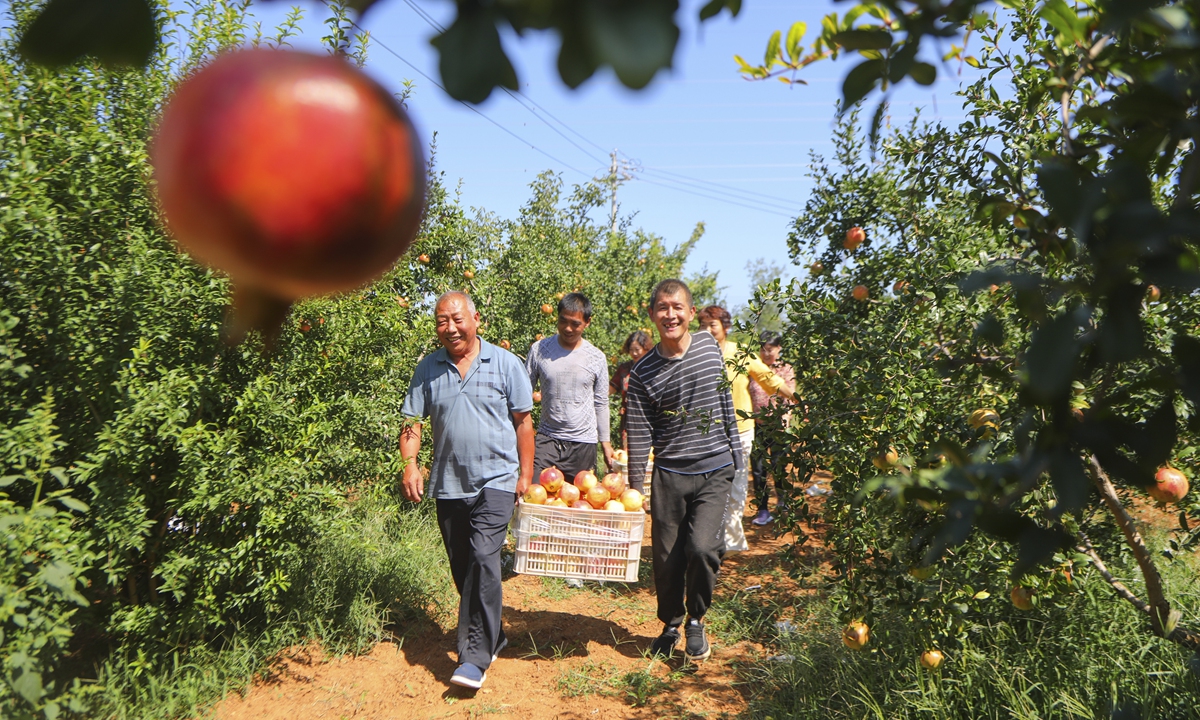
Local farmers carry pomegranates picked in Xiaolangdi town in Luoyang, Henan Province on September 7, 2022. Photo: IC
Over the past decades, the mass resettlement of about 200,000 people made way for the Xiaolangdi water control project mainly between 1995 and 2001 as carried out in three phases.A farmer surnamed Huang from Mengzhou, Henan, was among those who were resettled in 2005 along with their families for the then proposed dam project area.
In recent years, more than 5 million yuan ($690,000) has been invested to improve road infrastructure and the general living standards in migrant villages in Mengzhou.
Huang's hometown was originally located deep in the mountains of the Xiaolangdi Dam area, where the land was non-arable, droughts were frequent, and agricultural production conditions were dismal.
By contrast, 20 years of construction efforts by the government have now turned the migrant village into a beautiful resettlement area in Mengzhou. Villagers are now able to employ advanced farming techniques, establish edible mushroom cultivation bases, and actively participate in agricultural training programs organized by the local government, increasing their income as compared to the past, Huang told the Global Times.
Similarly, in the Xiaolangdi Dam area, a bird habitat has also thrived. "The area around the Xiaolangdi Dam used to be quite sparsely populated with trees, but now it is much greener. In the scenic area near the dam, visitors can see many water birds and swans enjoying the good ecological environment of the wetland," said Li Peng, who has worked on the Xiaolangdi project for 26 years and is the director of the dam's water dispatch at the management level.
Huang is delighted to see the once desolate flats areas transformed into fertile, prosperous lands on which migrant villages now stand, and he is confident in China's future goals of building a new countryside and achieving socialist modernization.
